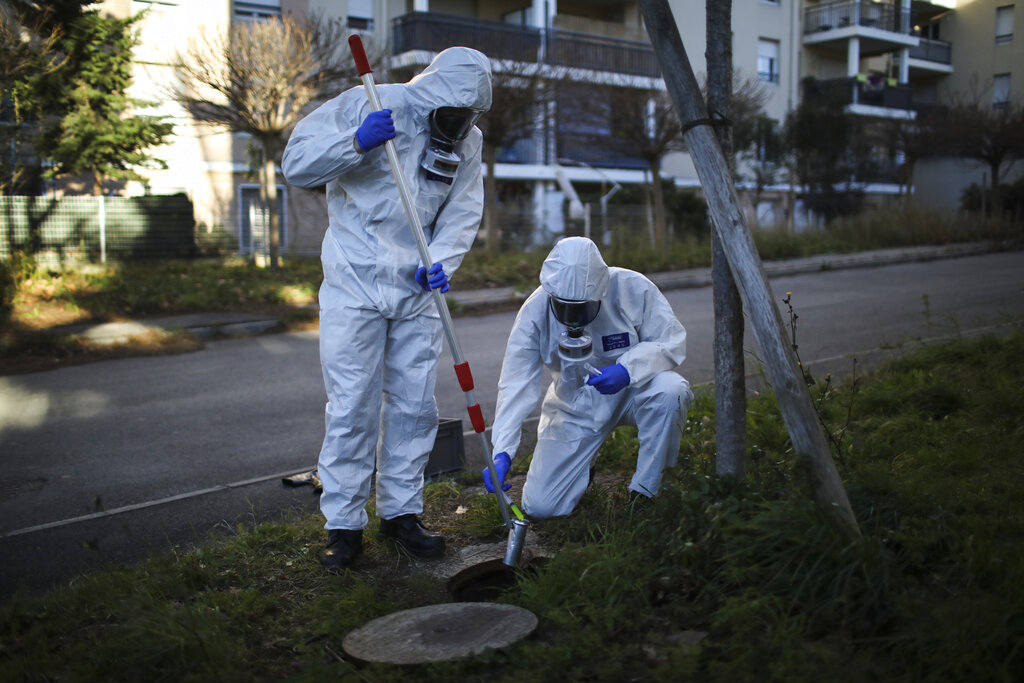
Firefighters from the Marins-Pompiers of Marseille extract samples of sewage water at a retirement home in Marseille, southern France, Thursday Jan. 14, 2021, to trace concentrations of COVID-19 and the highly contagious variant that has been discovered in Britain. (Photo: AP)
As coronavirus infections rise in some parts of the world, experts are watching for a potential new COVID-19 surge in the U.S. — and wondering how long it will take to detect.
Despite disease monitoring improvements over the last two years, they say, some recent developments don't bode well:
—As more people take rapid COVID-19 tests at home, fewer people are getting the gold-standard tests that the government relies on for case counts.
—The Centers for Disease Control and Prevention will soon use fewer labs to look for new variants.
—Health officials are increasingly focusing on hospital admissions, which rise only after a surge has arrived.
—A wastewater surveillance program remains a patchwork that cannot yet be counted on for the data needed to understand coming surges.
—White House officials say the government is running out of funds for vaccines, treatments and testing.
“We’re not in a great situation,” said Jennifer Nuzzo, a Brown University pandemic researcher.
Scientists acknowledge that the wide availability of vaccines and treatments puts the nation in a better place than when the pandemic began, and that monitoring has come a long way.
For example, scientists this week touted a 6-month-old program that tests international travelers flying into four U.S. airports. Genetic testing of a sample on Dec. 14 turned up a coronavirus variant — the descendant of omicron known as BA.2 — seven days earlier than any other reported detection in the U.S.
More good news: U.S. cases, hospitalizations and deaths have been falling for weeks.
But it’s different elsewhere. The World Health Organization this week reported that the number of new coronavirus cases increased two weeks in a row globally, likely because COVID-19 prevention measures have been halted in numerous countries and because BA.2 spreads more easily.
Some public health experts aren't certain what that means for the U.S.
BA.2 accounts for a growing share of U.S. cases, the CDC said — more than one-third nationally and more than half in the Northeast. Small increases in overall case rates have been noted in New York, and in hospital admissions in New England.
Some of the northern U.S. states with the highest rates of BA.2, however, have some of the lowest case rates, noted Katriona Shea of Penn State University.
Dr. James Musser, an infectious disease specialist at Houston Methodist, called the national case data on BA.2 “murky.” He added: “What we really need is as much real-time data as possible ... to inform decisions.”
Here’s what COVID-19 trackers are looking at and what worries scientists about them.


